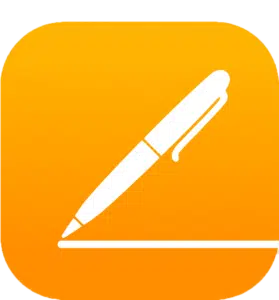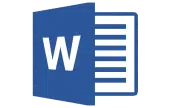Writing great resumes is a skill, and not everyone nails their first attempt.
But that’s okay; it’s possible to learn how to optimize each section and use it to your advantage. Yes, even if you’re not a writer at heart or particularly good with words.
We’ve compiled the top resume dos and don’ts that can help you weed out problematic areas and boost the content that a hiring manager wants to see!
Resume Dos and Don’ts
Did you know that out of 250 applicants, only 4-6 make it past the resume filtration phase on average?
If you want to be one of those few that land interviews, your resume has to be as free of errors as possible.
16 Resume Dos
1. Use the Right Format
From formatting to word choice, here are some tips to keep in mind:
Not many know this, but there are types of resumes, and each serves a different purpose.
The default is a reverse-chronological resume format listing work history from most recent to oldest, which works well for ATS.
A functional resume isn’t as common, but it’s better if you’re shifting careers and your work experience is no longer relevant.
2. Include Soft and Hard Skills
Some job seekers focus too much on listing their technical or hard skills. These can help, but you still need to include some interpersonal skills.
While 93% of employers find soft skills crucial for evaluating new employees, 54% of all applicants never include soft skills in their CVs!
3. Tailor Each Resume to the Job Description
You don’t need to rewrite the resume for each job application like you would with a cover letter, but some tailoring tweaks won’t hurt. In fact, it’s one of the top resume tips.
How? Well, look at the job listing and incorporate some of the skills/keywords into your resume.
4. Highlight Relevant Experience
Hiring managers want to see relevant work experience, preferably in the top half of the resume. That’s why you need to highlight things like:
- A clear job title in the header under your name
- The name of market leaders you’ve worked for before
- Title, dates, and duties for your most recent job in the field
- Measurable achievements
5. Leave Out Common Skills
Many applicants load the skills section with buzzwords like “team player,” “fast learner,” “detail-oriented,” “creative,” and “hardworking.”
Those sound positive, but they’re overused clichés that a hiring manager won’t give a second look. In fact, they can backfire and make your resume look generic.
To avoid this, ask yourself: Did the recruiter specifically ask for this skill in the job listing? Is it reasonable to assume that all applicants have this skill?
If your answer is no to the first and yes to the second, you’re better off leaving it out of the resume.
6. Back Up Claims With Evidence
What if those “clichés” are actually relevant to the role?
In this case, it helps to show the hiring manager why you believe you’re skilled.
Use tangible achievements to give examples that back up each claim. You can also mention certificates that prove you’ve received formal training for a certain skill.
7. Focus on Your Achievements
Instead of writing duties in bland statements, it helps to highlight how you stood out in each aspect.
To do this, reflect on your recent jobs and find instances where you improved the workflow. It’s even better to quantify those achievements in numbers!
8. Show Your Career Progress
The perfect resume should map your professional progress. This means that the recruiter should see that each entry in your work history is a step up.
Suppose you were promoted more than once in your last company. In this case, it would be wise to separate titles as sub-headings under the main entry, starting with the most recent roles.
How to Include Multiple Jobs in the Same Company in Your Resume Resume Tips
9. Use Straightforward Sentences
There are times when it’s appropriate to show off your verbose language. Writing a resume isn’t one of those, but it’s a common mistake among millennials.
Aim for the simplest sentence structure that drives the point home. Anything else is a waste of valuable space on your resume.
10. Add Action Words
Persuasive and effective word choice helps you add impact, even in simple sentences. For one, you can start your duties and achievements with an action verb like “increased” or “solved.”
The Career Services center at CU Boulder offers a nifty list of words to use if you can’t find the right verb.
11. Highlight Your Contact Info
When reading a resume, most hiring managers expect to see the contact information section at the top of the page. That’s why it’s safer to keep it in the header instead of getting creative with the layout.
If you include a resume cover page in the job application, add your contact information there, too.
12. Make It Scannable
When people say making the resume “scannable,” they mean easier to read for both humans and optical character recognition (OCR).
Although scanning printed resumes isn’t a common practice now, it doesn’t hurt to know how to deal with OCR. Here are some tips to keep in mind:
- Use 10-12 pt. font for the body, but keep the headings larger and in all caps.
- Avoid bold and italics if they make the letters touch.
- Don’t use decorative bullet points.
- Use black text on a white background to boost contrast.
- Don’t rely on graphics in the resume format.
13. Use a Template
Unless you have experience in design, it’s safer to go with a template file editable in Google Docs or MS Word. This way, you won’t waste time tweaking the resume format in unfamiliar software.
Bonus points if you can get the resume template to match the cover letter!
Some sites that offer free templates also outsource to a resume writing service. These services can be worth a shot if you struggle with preset templates.
14. Limit It to 1-2 Pages
A typical resume is one page long, but some industries call for a second page. Either way, you should try to keep the document as short as possible.
How? Figure out what to put on a resume, and keep everything irrelevant out of the file. If that doesn’t cut it, optimize the resume format by tweaking the font size, line spacing, and margins.
15. Pay Attention to the Details
Formatting errors reflect badly on the applicant’s attention to detail.
You wouldn’t want to type the date once in a “DD, MM, YY” format and “DD, MM, YYYY” in another entry. It’s such a minor difference, but it’s all about being consistent!
The same applies to bold text, bullet point size, dashes, and indentations.
16. Save It as a PDF
You’re free to use Google Docs, MS Word, Adobe, or any other software—it won’t matter to the recruiter as long as you can save the file as a PDF in the end.
Why PDF? Well, it’s compressible, highly compatible, and better for formatting retention, among other perks.
10 Resume Don’ts
Since one mistake can cost you an interview, you’ll need to tip-toe around the following resume don’ts:
1. Make General Claims
It’s one thing to boast about increasing sales by x%, but adding a statement like “Single-handedly increased sales in the department” is a different story.
You need to be able to back up every claim on the resume if the recruiter brings it up in the job interview. That’s why being as specific as possible is the way to go.
2. Overload the Resume
There’s such a thing as too much information on a resume. Some people think extensive information “sells” them better, but it can backfire if the recruiter finds it all visually overwhelming.
5 Causes Why Job Seekers Put Too Much Info In Their Resume
If you struggle with organization, correctly outline the information before writing the resume.
3. Mislead or Lie
It’s okay to tweak the resume to push the skills and experiences you know that the hiring manager wants to see upfront. What you should never do is fake those skills.
Not only can the employer catch you in a lie with a reference call or a skill test, but it’s also unethical.
4. Include References on the Same Page
What was once a common resume section is now an outdated waste of space—job seekers don’t add references anymore.
Even if the job listing specifically asks for a references list, you can keep it out of the resume by attaching a separate reference page.
5. Worry if You Don’t Have Relevant Experience
If you don’t have any relevant experience at all, it’s probably one of two scenarios:
- You’re applying for an entry-level position.
- You’re shifting from a different field.
In the first scenario, recruiters adjust their expectations and won’t be shocked to see that you don’t have work experience. Most applicants would be fresh graduates anyway.
If it’s the second one, you can always use a cover letter to highlight why you’re a suitable candidate from a subjective angle. Try to let the hiring manager see how your skill sets still work well for this role.
6. Include Anything Confidential
Revealing your contribution to a top project in your last job can be tempting, but there’s a catch. If the project is confidential, you’re only telling the prospective employer that you can’t be trusted.
Before you mention client names, upcoming projects, or financial details, ask yourself if your ex-employer would consider these confidential.
7. Include Random Hobbies
It’s tough keeping your resume to one page under normal conditions. There’s no point wasting valuable space on your hobbies or that random sport you used to play back in high school.
It’s fun for small talk but irrelevant to a job application.
8. Try to Hide Gaps
Never lie about employment dates to hide gaps on your resume.
One call to a former employee can blow your chances. Plus, the inconsistencies between other documents in the application, like the cover letter, will give you away.
9. Use More Than Two Fonts
It’s okay to use one font for the headings and one for the body if it helps the layout. Even then, the fonts need to be complementary.
Using more than two typefaces is risky and can be distracting if you don’t do it right.
10. Make the Design Overwhelming
Infographics, icons, and dividers can make the resume pop, but not everyone can strike the right balance between catchy and over-embellished. There’s also the risk of not being ATS-compatible.
A clean, minimalistic template is always a safer choice.
What Are Red Flags in a Resume?
Even with clean formatting and tailored content, a couple of red flags can ruin your shot at landing an interview.
Here are two warning signs that recruiters see all the time:
Big, Unexplained Employment Gaps
Although it’s becoming less stigmatized with time, the employment gap still looks rough on paper. It gets the recruiter wondering about your competency, attitude, and commitment.
To address these concerns, you need to show the recruiter that your skills are still relevant and you had a valid reason for remaining unemployed for a while. The cover letter is where you can cover all these angles.
For the resume, listing volunteer work, consulting, or training can show that you’ve kept yourself busy.
Spelling and Grammar Mistakes
No matter how strong the content is, grammatical errors can be a major deterrent.
It says that you either didn’t care enough to proofread or aren’t competent enough to write a simple document. Both can cause a hiring manager to put your resume in the “no” pile.
Plus, ATS can’t pick up on keywords if you misspell them!
The remedy is to run your text through a proofreading tool (or two) before uploading the file.
Frequently Asked Questions
What Are the Top Five Resume Mistakes?
The most common mistakes in resumes are using passive sentences, poor formatting, failing to tailor the content, exaggerating skill sets, and overstuffing.
Each of these mistakes can manifest in different ways. For instance, overstuffing can range from adding irrelevant personal information to using verbose language.
What Are Red Flags in a Resume?
Typos, grammatical errors, and using inappropriate email addresses can make you seem unprofessional. Both job-hopping and long employment gaps can reduce your chances, too.
According to Google’s SVP of People Operations, trying to find loopholes to reveal confidential information is also a major flag.
Wrapping Up
An effective resume is concise, customized, readable, persuasive, and accurate. Submitting a document short of these aspects can get in between you and a job interview.
That’s not to say that you need to dwell on any flawed resumes you’ve used before, though. The goal is to keep the common mistakes in mind and avoid them in your next job search.
Leave a comment below if you have questions about the world of resume writing!








